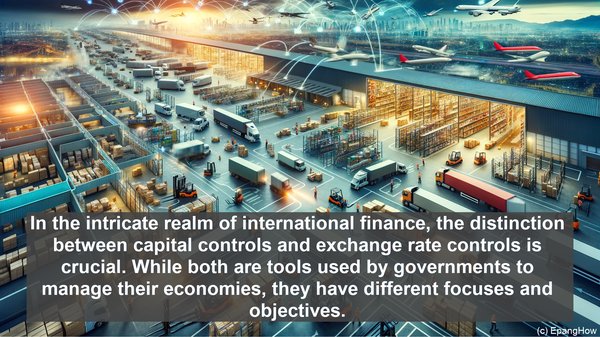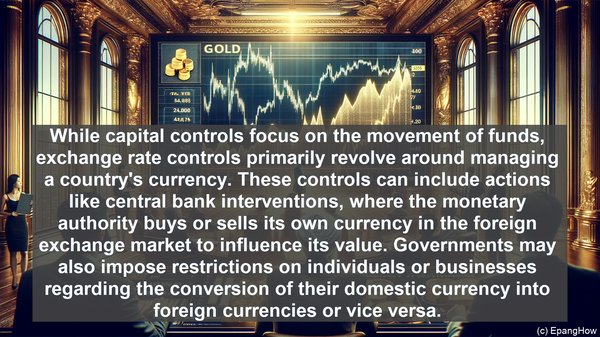Introduction: Navigating the Complexities of International Finance
Hello, everyone! Welcome to our article on the intriguing world of international finance. Today, we’ll be exploring the nuances between capital controls and exchange rate controls, two terms that are often used interchangeably but have distinct meanings and implications.

Defining Capital Controls: Preserving Domestic Financial Stability
Capital controls refer to a set of measures implemented by governments to regulate the flow of funds in and out of a country’s economy. These controls can take various forms, such as restrictions on foreign investments, limits on the repatriation of profits, or even the imposition of taxes on certain transactions. The primary objective of capital controls is to safeguard a nation’s financial stability, especially during times of economic turbulence.
The Rationale Behind Capital Controls: Balancing Economic Priorities
Capital controls are often employed to strike a delicate balance between conflicting economic goals. On one hand, a country may want to attract foreign investments to stimulate growth and create employment opportunities. On the other hand, an excessive influx of capital can lead to speculative bubbles, currency appreciation, and a loss of competitiveness for domestic industries. By carefully managing the flow of funds, capital controls aim to mitigate these risks and ensure a more stable economic environment.
Exchange Rate Controls: Influencing Currency Valuations
While capital controls focus on the movement of funds, exchange rate controls primarily revolve around managing a country’s currency. These controls can include actions like central bank interventions, where the monetary authority buys or sells its own currency in the foreign exchange market to influence its value. Governments may also impose restrictions on individuals or businesses regarding the conversion of their domestic currency into foreign currencies or vice versa.
The Multi-Faceted Objectives of Exchange Rate Controls
Exchange rate controls serve a multitude of purposes. For instance, a country may want to maintain a competitive advantage in international trade by deliberately devaluing its currency. This makes its exports more affordable and can boost its export-oriented industries. Conversely, a government might intervene to prevent excessive currency depreciation, which can lead to imported inflation and erode the purchasing power of its citizens. Exchange rate controls, therefore, involve a delicate interplay of economic considerations and policy objectives.
The Global Context: Evolving Perspectives on Controls
Over the years, the stance towards capital and exchange rate controls has evolved. While they were widely used in the mid-20th century, the trend shifted towards liberalization in the following decades. Many countries embraced the principles of free capital mobility and floating exchange rates, aiming to enhance market efficiency and attract investments. However, recent economic crises and the challenges posed by global financial integration have prompted a reevaluation of these policies, with some nations reintroducing or modifying their controls.

